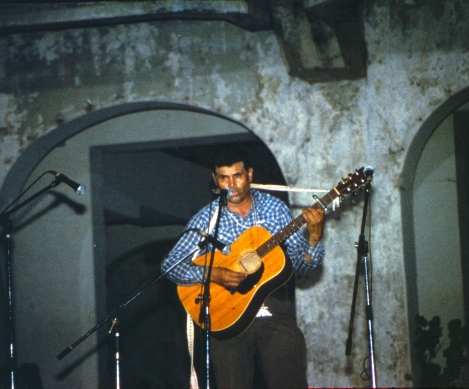|
Even though la marcha, as such, was not allowed into Honduras or El Salvador, some of us did get into
these countries as individuals to participate in peace actions carried out by the committees there.
On the Salvador and Honduras pages, I will present what information I have, both from my notes, and
recent material from Peter Holding and Sonja Iskov.
Guatemala has signaled that we can enter, but not as the peace march per se. The plan is to fly into
Guatemala City as "tourists" in small groups, and my notes indicate that January 8th and
9th were pretty much dedicated to buying tickets.
My notes indicate too
that Aurora was already in Guatemala City, learning what was possible for us, and probably also
arranging lodging for la marcha's first arrivals, the leadership group. I will provide more details on
our entry into Guatemala on the Guatemala page.
On the 10th, Theresa and I were hitchhiking back to Managua—possibly from obtaining our "tourist"
visas at the Guastemalan embassy—when we were
picked up by a man in a 70s-vintage, brown Volkswagon bus. He was well-dressed, spoke good English, and
told us that he was a
Salvadoran businessman, recently put in charge of a very large and profitable U.S. enterprise in Managua.
He said that
he had replaced another, very well known businessman who had taken on other responsibilities related
to President Reagan's contra war. I did not get his name.
He volunteered an opinion about the conflict in
his own country, El Salvador. It was not a civil war—it was a class war. The poor were caught
between the extreme right and the extreme left.
I asked: "Didn't the extreme left arise because of the refusal of the oligarchy to grant the poor any
benefits whatsoever?" "Yes," he answered.
(Relevant to this honest answer is the fate of a member of the Salvadoran
oligarchy who had come out in favor of benefits for the working poor. I don't have his name, or the exact
time period, but I believe that he had been elected to office, and was promoting his more progressive vision
in the Salvadoran legislature. Ond day his bullet-riddled body was found in a field. It was understood by all
that he had been killed by his wealthy friends, for whom exploitation of the poor was a God-given right.
As always, I will be grateful for information on this episode in El Salvador's extremely brutal history.)
"I'm not a leftist—I'm right," the businessman added. But I believe in these people
[the Sandinistas]." It was clear
that he did not fear the nationalization of the enterprise he managed. If, as I would bet, under the
Sandinistas
his enterprise had to treat the help with a bit more consideration than the previous management did; or the
enterprise had to plow back into the Nicaraguan economy a bit more of its profits than it did previously,
he was clearly not upset about that either.
We parted on friendly terms, and I hope that this gentleman will someday recognize himself on this
page and send me his current opinions of that era.
On our last evening in Nicaragua as a coherent group, we shared our considerable talents
with each other.
I sang a bit myself, and for some reason, on our
one night in Costa Rica, I had jotted down the words to a baritone aria from Andrea
Chenier which I had memorized. Perhaps I had thought to charm our Costa Rica Libre attackers with my
(very) modest operatic talents. Nevertheless, in spite of the warm vibes all around, tonight I decided
not to perform.
|
 Thursday, January 9.
Thursday, January 9.